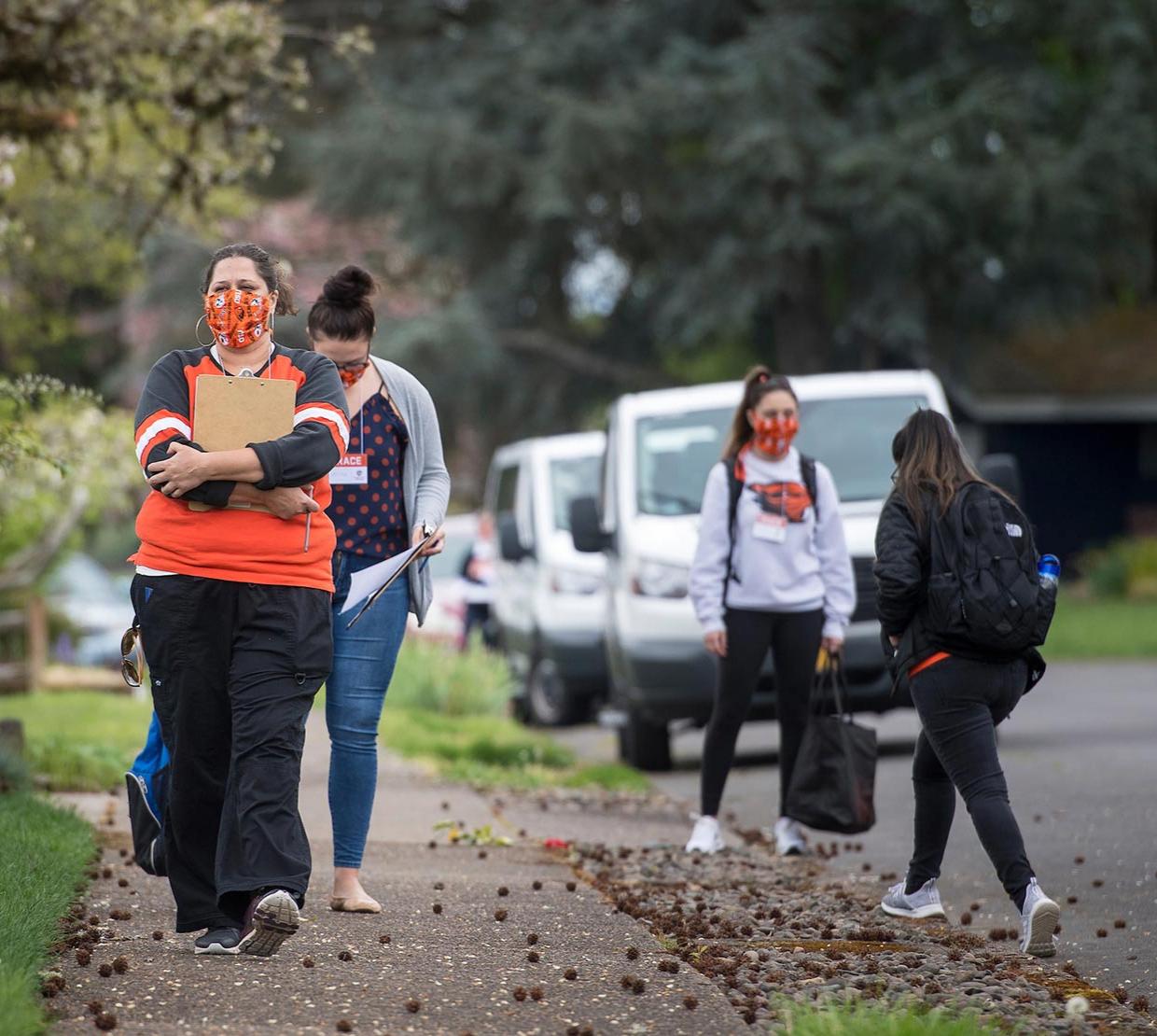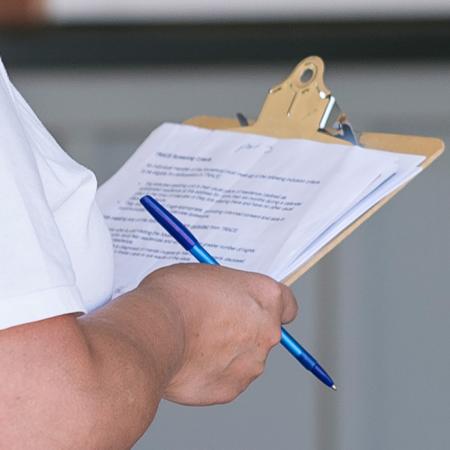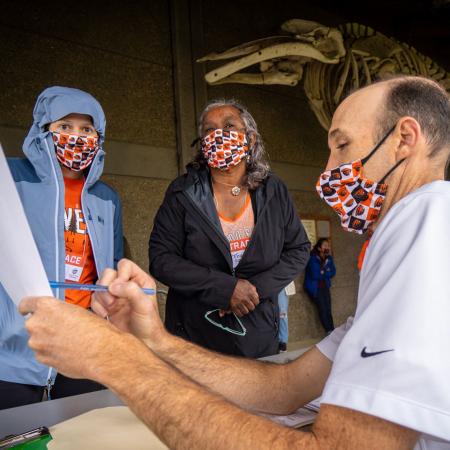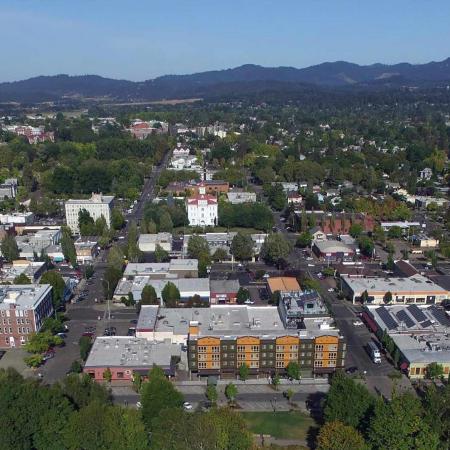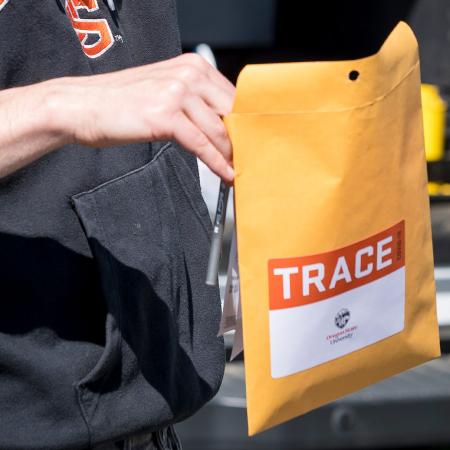NEWPORT, Ore. – TRACE-COVID-19, the groundbreaking Oregon State University project to determine community prevalence of the novel coronavirus, is expanding to include two days of sampling in Newport on June 20-21.
The addition of Newport to the study follows the positive tests of more than 120 workers at Pacific Seafood, which operates five processing facilities in the city.
In Newport, the TRACE-COVID-19 project will include the collaboration of OSU’s Hatfield Marine Science Center, the OSU Extension Service and the OSU College of Public Health and Human Sciences, which will assist local health officials with contact tracing for any positive tests that might result from the TRACE sampling. TRACE-COVID-19 stands for Team-based Rapid Assessment of Community-Level Coronavirus Epidemics.
Oregon State’s work in Newport will complement other sampling, testing and contact tracing assistance being given by health officials from Tillamook and Clatsop counties.
“Being true to the rapid designation and purpose of TRACE, we are pleased to be able to nimbly and rapidly respond to help inform the Lincoln County response to this acute COVID-19 outbreak,” said Javier Nieto, dean of OSU’s College of Public Health and Human Sciences and one of the TRACE-COVID-19 project’s principal research investigators.
“Additional data is critical to plan and adapt to this pandemic and any future health crisis that our coastal communities may face,” said Kaety Jacobson, chair of the Lincoln County Board of Commissioners. “OSU has always been a trusted partner, and this is another great example of that partnership working to address our community needs.”
In Newport, university researchers will collaborate with Lincoln County Health & Human Services.
“The results from the TRACE team’s community sampling will give the community current prevalence data and inform a better picture of how COVID-19 moves through rural communities,” said Bob Cowen, director of the Hatfield Marine Science Center. “It’s impressive that OSU is able to provide the TRACE team within Newport this quickly. I am pleased that HMSC will serve as the TRACE team’s base of operations this next weekend.”
The idea of TRACE is to take a team-based and community-based approach to rapidly assess coronavirus prevalence, said Ben Dalziel, assistant professor in the College of Science at OSU and co-director of the project.
“It’s important to collaborate with Lincoln County health officials and the Newport community to better understand what’s happening in real time with the virus on a local level,” Dalziel said.
Newport’s population is 10,600, comprising roughly 20% of the nearly 50,000 people who live in Lincoln County.
TRACE-COVID-19 began in Corvallis the weekend of April 25-26 as a partnership between five OSU colleges and the Benton County Health Department and continued the subsequent two weekends. The fourth weekend of sampling had originally been scheduled for May 16-17 but was rescheduled by TRACE leaders to June 13-14 to help determine if relaxing stay-at-home orders led to a jump in the prevalence of the virus in the Corvallis community.
The study expanded to Bend for two days of sampling May 30-31 in a joint effort of OSU-Cascades, Oregon State faculty researchers in Corvallis and Deschutes County health officials.
At each home visited by TRACE field workers, members of the household are invited to participate in the study. Those who choose to take part are asked to provide information such as their name and date of birth; to fill out a simple consent form; and to answer a few confidential, health-related questions.
Participants are given a nasal-swab test kit that they administer to themselves inside their home and their minor children if they want them to take part. The field staff wait outside, and the participants leave the completed test kits outside their front door. Field staff maintain a safe distance at all times and do not enter anyone’s home.
The safety of participants and TRACE field staff is a key part of the study’s research design, said Jeff Bethel, an associate professor in OSU’s College of Public Health and Human Sciences and part of the TRACE leadership team.
The tests used in TRACE-COVID-19 collect material from the entrance of the nose and are more comfortable and less invasive than the tests that collect secretions from the throat and the back of the nose.
The field workers leave participants with information about the project and how they will receive their results – available in seven to 10 days – as well as health guidance from Lincoln County and the Centers for Disease Control and Prevention. Participants in the study are sent their results and those of their minor children by secure e-mail with receipt by standard mail delivery as a backup. Everyone’s personal information is safeguarded.
In announcing prevalence results, the TRACE team follows reporting policies used by the Oregon Health Authority and local health departments by not announcing numbers of positive cases between 1 and 9. Doing so may contribute to identifying an actual community member who tested positive, Dalziel said.
The TRACE study is a collaboration of the OSU colleges of Science, Agricultural Sciences, Engineering, Public Health and Human Sciences, and the Carlson College of Veterinary Medicine – in partnership with county health officials.
The study was initially funded by OSU and a grant from the David and Lucile Packard Foundation, and has been aided by work from the OSU Foundation and the OSU Alumni Association. Funding from PacificSource Health plans has allowed for the expansion to Bend and Newport, and additional sampling in Corvallis.
The diagnostic testing component of TRACE operates through a partnership between the Oregon Veterinary Diagnostic Laboratory, which is located at OSU, and Willamette Valley Toxicology.
For more information TRACE, visit the TRACE-COVID-19 website. The site includes a list of frequently asked questions.
COVID-19, first reported to the World Health Organization on Dec. 31, 2019, has been confirmed in more than 7.8 million people worldwide and killed more than 430,000 people. In the United States, there have been more than 2 million reported cases – including more than 5,300 in Oregon – and more than 115,000 deaths nationwide. Lincoln County has had 198 confirmed cases and zero deaths.
This story was originally posted by the Oregon State University newsroom.
